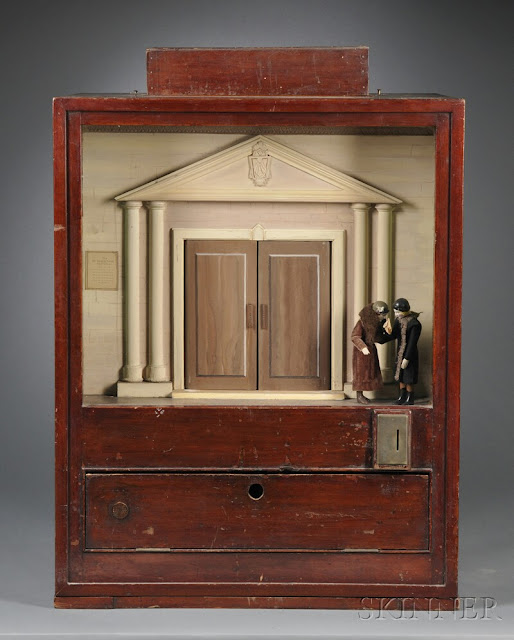Tonight at Observatory, hope to see you for a screening of Kat Green's intriguing looking film "The Secret Life of Mushrooms," a documentary about psychedelic Psilocybin mushroom tourism in Mexico, followed by a Q and A with the filmmakers. Also coming up: workshops withc ceroplast Sigrid Sarda in wax anatomical votives and life and death
masks; "Drawing from the Bestiary" class with
Saul Chernick; an upcoming lecture with Mel Gordon about
Erik Jan Hanussen: Hitler’s Jewish Clairvoyant; and the screening of a film detailing the unexpectedly dark
history of Jell-O.
Full list of upcoming events follows; Hope to see you at one--if not more!--of
these terrific events.
"The Secret Life of Mushrooms" -- Screening and Q and A with the Filmmakers
Screening of the film "The Secret Life of Mushrooms" with the film's producer/director Kathleen Green and interviewer Dan Glass
Date: TONIGHT Monday, May 21
Time: 8:00
Admission: $5
Presented by Morbid Anatomy
"Kat Green's documentary on mushroom tourism in Mexico is a valuable
and insightful examination of the fallout when global culture
encounters indigenous sacred traditions. At a time when most of the
focus is on ayahuasca tourism in the Amazon, Kat's documentary reminds
us that mushroom tourism continues, as it has since the 60s. Well worth
viewing!" – Dr. Dennis McKenna, co-author of The Invisible Landscape: Mind, Hallucinogens, and the I Ching
Psilocybin mushrooms were first brought into the public consciousness in the late 1950's after
R. Gordon Wasson discovered the ceremonial mushroom rituals of the Mazatec Indians in Mexico and published his findings in Life magazine.
Huautla de Jimenez – the largest town in the Sierra Mazateca – was made
famous amongst spiritual seekers, resulting in a hippie invasion to the
remote mountain town that lasted over a decade. Today, mushrooms are
still commonly used for healing, and have become a very public symbol
of Huautla's pride in their culture.
The Secret Life of Mushrooms features interviews with anthropologist and author of
The Devil's Book of Culture,
Ben Feinberg, local curandera Ines Cortes Rodriguez, Mazatec ritual
specialist Edward Abse, and a wide variety of local historians,
musicians, and business owners, as journalist Dan Glass investigates
the long term cultural effects that outsiders have had on the small
mountain town in the last 50 years.
Tonight, join filmmakers Kathleen Green and Dan Glass for a screening of
The Secret Life of Mushrooms at Observatory, followed by a brief Q & A. You can find out more about the film by clicking
here.
Kathleen Green (Producer/Director –
The Secret Life of Mushrooms)
Brooklyn filmmaker Kathleen Green has been working in film, video, and
live event production since 1997. In that time, she has created
documentaries, music videos, short films, and visual art with the goals
of finding untold stories, exploring new ways to capture dance on
camera, and generally making pretty things to look at. Her work has
been screened at the Dance on Camera Festival, Coney Island Film
Festival, the New York Tango Film Festival, the 2007 Americans for the
Arts Convention, the Pioneer Theatre, Collective: Unconscious, the
Bowery Poetry Club, on the Fuse network, and at various galleries in
Berlin. She has also worked with HBO, MTV, MSNBC, the Sundance Channel,
VH1, Fuse, and the History Channel as a freelance editor and post
supervisor. She is currently developing a non-fiction series about
fire artists and their work entitled
Playing With Fire, and the dance film,
Strange Attractors.
Dan Glass (Interviewer –
The Secret Life of Mushrooms)
Dan Glass has written travel, science, and culture stories about such
diverse subjects as solar eclipse chasing, Puerto Rican senior citizen
bicycle gangs, the psychological effect of viewing earth from space,
and flophouses in Coney Island, among others. He's traveled through
over 40 countries on five continents, with highlights including
excursions to Ethiopia's Omo Valley to find ritual stickfighting
battles, solo horse treks through central Mongolia, and riverboat trips
800 miles down the Congo River. His work has been featured in outlets
including
Wired, NPR, Discover, and
Playboy Online. He lives in New York City.
And onward and upwards:
- May 31: “Powder House” A Film about Jell-O:
Screening of this film about this "symbol, multi-faceted and elusive;
it’s silly, playful, funereal, American. It’s made from bones." Q and A
with the filmmakers
- June 3: Life and Death Mask Making Workshop with Artist Sigrid Sarda *** Must RSVP to morbidanatomy [at] gmail.com
- June 3: (please note date change) Erik Jan Hanussen: Hitler’s Jewish Clairvoyant: An illustrated lecture and screening of “lost footage” with Mel Gordon, author of Erik Jan Hanussen: Hitler’s Jewish Clairvoyant and Grand Guiginol: Theatre of Fear and Terror
- June 24: Anatomical Wax Votive Workshop with Artist Sigrid Sarda ***Must RSVP to morbidanatomy [at] gmail.com
- June 25: Class: Drawing from the Bestiary: Animal Anatomy of Real and Imagined Creatures: 4-Part Class with Artist Saul Chernick, M.F.A., Rutgers University ***Must RSVP to morbidanatomy [at] gmail.com
- June 30: Anthropomorphic Insect Shadowbox Workshop: With former AMNH Senior Insect Preparator Daisy Tainton
- June 30: Morbid Anatomy Library Post-Disaster Benefit SAVE THE DATE
- July 7: Anthropomorphic Insect Shadowbox Workshop: With former AMNH Senior Insect Preparator Daisy Tainton
- July 13: Anatomical Venuses, The Slashed Beauty, and Fetuses Dancing a Jig:
Illustrated lecture by Morbid Anatomy founder Joanna Ebenstein,
followed by afterparty featuring thematic music and specialty cocktails
by Friese Undine
You can find out more about all events by clicking
here.














































